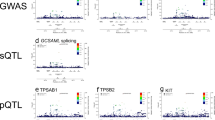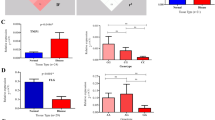Abstract
Generalized pustular psoriasis (GPP) is an autoinflammatory skin disease whose pathogenesis has not yet been fully elucidated. Alpha-1-antichymotrypsin(ACT) is a protein encoded by the SERPINA3 gene and an inhibitor of cathepsin G. One study of a European sample suggested that the loss of ACT function caused by SERPINA3 mutation is implicated in GPP. However, the role of SERPINA3 in the pathogenesis of GPP in other ethnic populations is unclear. To explore this, seventy children with GPP were performed next-generation sequencing to identify rare variants in the SERPINA3 gene. Bioinformatic analysis and functional tests were used to determine the effects of the variants, and a comprehensive analysis was performed to determine the pathogenicity of the variants and whether they are associated with GPP. One rare deletion and three rare missense variants were identified in the SERPINA3 gene in GPP. The deletion variant c.1246_1247del was found to result in a mutant protein with an extension of 10 amino acids and a C-terminal of 20 amino acids that was completely different from the wild-type. This mutant was found to impede secretion of ACT, thus failing to function as an inhibitor of cathepsin G. Two missense variants were found to reduce the ability of ACT to inhibit cathepsin G enzymatic activity. The association analysis suggested that the deletion variant is associated with GPP. This study identified four rare novel mutations of SERPINA3 and demonstrated that three of these mutations result in loss of function, contributing to the pathogenesis of pediatric-onset GPP in the Asian population.
This is a preview of subscription content, access via your institution
Access options
Subscribe to this journal
Receive 12 print issues and online access
$259.00 per year
only $21.58 per issue
Buy this article
- Purchase on Springer Link
- Instant access to full article PDF
Prices may be subject to local taxes which are calculated during checkout



Similar content being viewed by others
Data availability
The original contributions presented in the study are included in the article/supplementary material. The raw dataset supporting the conclusions of this article is not readily available due to privacy regulations, but authors can be contacted for specific issues.
References
Frey S, Sticht H, Wilsmann-Theis D, Gerschutz A, Wolf K, Lohr S, et al. Rare loss-of-function mutation in SERPINA3 in generalized pustular Psoriasis. J Investig Dermatol. 2020;140:1451–5.e13.
Griffiths CE, Barker JN. Pathogenesis and clinical features of psoriasis. Lancet 2007;370:263–71.
Navarini AA, Burden AD, Capon F, Mrowietz U, Puig L, Koks S, et al. European consensus statement on phenotypes of pustular psoriasis. J Eur Acad Dermatol Venereol. 2017;31:1792–9.
Akiyama M, Takeichi T, McGrath JA, Sugiura K. Autoinflammatory keratinization diseases. J Allergy Clin Immunol. 2017;140:1545–7.
Marrakchi S, Guigue P, Renshaw BR, Puel A, Pei XY, Fraitag S, et al. Interleukin-36-receptor antagonist deficiency and generalized pustular psoriasis. N. Engl J Med. 2011;365:620–8.
Onoufriadis A, Simpson MA, Pink AE, Di Meglio P, Smith CH, Pullabhatla V, et al. Mutations in IL36RN/IL1F5 are associated with the severe episodic inflammatory skin disease known as generalized pustular psoriasis. Am J Hum Genet. 2011;89:432–7.
Jordan CT, Cao L, Roberson ED, Pierson KC, Yang CF, Joyce CE, et al. PSORS2 is due to mutations in CARD14. Am J Hum Genet. 2012;90:784–95.
Setta-Kaffetzi N, Simpson MA, Navarini AA, Patel VM, Lu HC, Allen MH, et al. AP1S3 mutations are associated with pustular psoriasis and impaired Toll-like receptor 3 trafficking. Am J Hum Genet. 2014;94:790–7.
Haskamp S, Bruns H, Hahn M, Hoffmann M, Gregor A, Lohr S, et al. Myeloperoxidase modulates inflammation in generalized pustular psoriasis and additional rare pustular skin diseases. Am J Hum Genet. 2020;107:527–38.
Vergnano M, Mockenhaupt M, Benzian-Olsson N, Paulmann M, Grys K, Mahil SK, et al. Loss-of-function myeloperoxidase mutations are associated with increased neutrophil counts and pustular skin disease. Am J Hum Genet. 2021;108:757.
Akiyama M. Pustular psoriasis as an autoinflammatory keratinization disease (AiKD): Genetic predisposing factors and promising therapeutic targets. J Dermatol Sci. 2022;105:11–7.
Twelves S, Mostafa A, Dand N, Burri E, Farkas K, Wilson R, et al. Clinical and genetic differences between pustular psoriasis subtypes. J Allergy Clin Immunol. 2019;143:1021–6.
Mossner R, Wilsmann-Theis D, Oji V, Gkogkolou P, Lohr S, Schulz P, et al. The genetic basis for most patients with pustular skin disease remains elusive. Br J Dermatol. 2018;178:740–8.
Kanazawa N, Nakamura T, Mikita N, Furukawa F. Novel IL36RN mutation in a Japanese case of early onset generalized pustular psoriasis. J Dermatol. 2013;40:749–51.
Zea-Vera AF, Estupinan-Lopez FE, Cifuentes-Burbano J, Vargas MJ, Bonelo A. Interleukin-36 Receptor Antagonist Deficiency (DITRA) with a Novel IL36RN homozygous mutation c.200G>T (P.Cys67Phe) in a Young Colombian Woman. J Clin Immunol. 2019;39:261–3.
Li H, Liao D, Meng S, Liu J, Li S, Ni S, et al. Novel IL36RN mutation identified in pediatric-onset generalized pustular psoriasis causes IL36 antagonist degradation. J Clin Immunol. 2021;41:701–4.
Horvath AJ, Irving JA, Rossjohn J, Law RH, Bottomley SP, Quinsey NS, et al. The murine orthologue of human antichymotrypsin: a structural paradigm for clade A3 serpins. J Biol Chem. 2005;280:43168–78.
Baker C, Belbin O, Kalsheker N, Morgan K. SERPINA3 (aka alpha-1-antichymotrypsin). Front Biosci: J Virtual Libr. 2007;12:2821–35.
Gettins PG. Serpin structure, mechanism, and function. Chem Rev. 2002;102:4751–804.
Haile Y, Carmine-Simmen K, Olechowski C, Kerr B, Bleackley RC, Giuliani F. Granzyme B-inhibitor serpina3n induces neuroprotection in vitro and in vivo. J Neuroinflammation. 2015;12:157.
Vicuna L, Strochlic DE, Latremoliere A, Bali KK, Simonetti M, Husainie D, et al. The serine protease inhibitor SerpinA3N attenuates neuropathic pain by inhibiting T cell-derived leukocyte elastase. Nat Med. 2015;21:518–23.
Henry CM, Sullivan GP, Clancy DM, Afonina IS, Kulms D, Martin SJ. Neutrophil-derived proteases escalate inflammation through activation of IL-36 family cytokines. Cell Rep. 2016;14:708–22.
Boehner A, Navarini AA, Eyerich K. Generalized pustular psoriasis - a model disease for specific targeted immunotherapy, systematic review. Exp Dermatol. 2018;27:1067–77.
Li J, Shi L, Zhang K, Zhang Y, Hu S, Zhao T, et al. VarCards: an integrated genetic and clinical database for coding variants in the human genome. Nucleic Acids Res. 2018;46:D1039–D48.
Lindmark B, Lilja H, Alm R, Eriksson S. The microheterogeneity of desialylated alpha 1-antichymotrypsin: the occurrence of two amino-terminal isoforms, one lacking a His-Pro dipeptide. Biochim et Biophys acta. 1989;997:90–5.
Sanchez-Navarro A, Gonzalez-Soria I, Caldino-Bohn R, Bobadilla NA. An integrative view of serpins in health and disease: the contribution of SerpinA3. Am J Physiol Cell Physiol. 2021;320:C106–C18.
Mahil SK, Twelves S, Farkas K, Setta-Kaffetzi N, Burden AD, Gach JE, et al. AP1S3 mutations cause skin autoinflammation by disrupting keratinocyte autophagy and up-regulating IL-36 production. J Investig Dermatol. 2016;136:2251–9.
Farooq M, Nakai H, Fujimoto A, Fujikawa H, Matsuyama A, Kariya N, et al. Mutation analysis of the IL36RN gene in 14 Japanese patients with generalized pustular psoriasis. Hum Mutat. 2013;34:176–83.
Li M, Han J, Lu Z, Li H, Zhu K, Cheng R, et al. Prevalent and rare mutations in IL-36RN gene in Chinese patients with generalized pustular psoriasis and Psoriasis vulgaris. The. J Investig Dermatol. 2013;133:2637–9.
Zhou J, Luo Q, Cheng Y, Wen X, Liu J. An update on genetic basis of generalized pustular psoriasis (Review). Int J Mol Med. 2021;47:118.
Israel L, Mellett M. Clinical and genetic heterogeneity of CARD14 mutations in psoriatic skin disease. Front Immunol. 2018;9:2239.
Ueda Y, Komine M, Kamiya K, Tsuda H, Maekawa T, Murata S, et al. Generalized pustular psoriasis in a 92-year-old man with a homozygous nonsense mutation in IL36RN. J Dermatol. 2018;45:326–8.
Acknowledgements
We thank the patients and their families for their kind cooperation in this study.
Funding
Supported partially by the Clinical research project of Children’s Hospital of Chongqing Medical University (Grant no. 6000052 to H.L.) and the National Natural Science Foundation of China (Grant nos. 81070269 and 81571388 to W.Z.). the Natural Science Foundation of Chongqing, China (Grant No. cstc2021jcyj-msxmX0244 to S.M.) and the General Basic Research Project from the Ministry of Education Key Laboratory of Child Development and Disorders (Grant No. GBRP-202114 to S.M.).
Author information
Authors and Affiliations
Corresponding author
Ethics declarations
Competing interests
The authors declare no competing interests.
Additional information
Publisher’s note Springer Nature remains neutral with regard to jurisdictional claims in published maps and institutional affiliations.
Rights and permissions
Springer Nature or its licensor (e.g. a society or other partner) holds exclusive rights to this article under a publishing agreement with the author(s) or other rightsholder(s); author self-archiving of the accepted manuscript version of this article is solely governed by the terms of such publishing agreement and applicable law.
About this article
Cite this article
Liu, Y., Li, H., Meng, S. et al. Newly revealed variants of SERPINA3 in generalized pustular psoriasis attenuate inhibition of ACT on cathepsin G. J Hum Genet 68, 419–425 (2023). https://doi.org/10.1038/s10038-023-01139-z
Received:
Revised:
Accepted:
Published:
Issue Date:
DOI: https://doi.org/10.1038/s10038-023-01139-z



